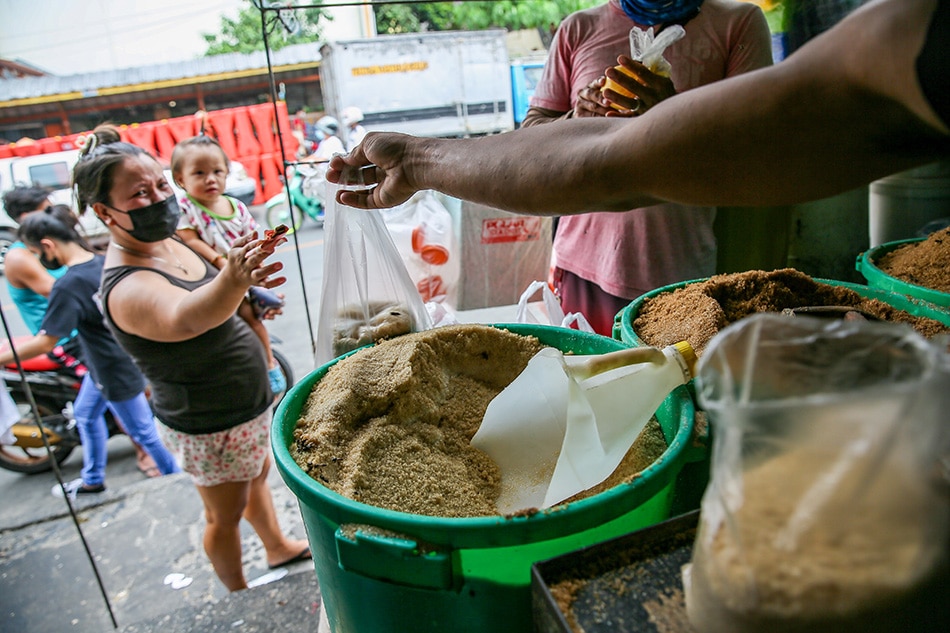High interest rate, elevated inflation to bite into household consumption: economist | ABS-CBN
ADVERTISEMENT

Welcome, Kapamilya! We use cookies to improve your browsing experience. Continuing to use this site means you agree to our use of cookies. Tell me more!
High interest rate, elevated inflation to bite into household consumption: economist
High interest rate, elevated inflation to bite into household consumption: economist
ABS-CBN News
Published Oct 14, 2022 10:37 AM PHT
|
Updated Oct 14, 2022 11:55 AM PHT
MANILA — Household consumption could slow down in the next few months as the impact of previous interest rate hikes by the central bank takes effect and as inflation remains elevated, an economist said on Friday.
MANILA — Household consumption could slow down in the next few months as the impact of previous interest rate hikes by the central bank takes effect and as inflation remains elevated, an economist said on Friday.
Inflation quickened to 6.9 percent in September, government data showed.
Inflation quickened to 6.9 percent in September, government data showed.
Inflation crossing the 7-percent mark is possible in November, ING Bank Senior Economist Nicholas Mapa said, adding that it could peak in November or December.
Inflation crossing the 7-percent mark is possible in November, ING Bank Senior Economist Nicholas Mapa said, adding that it could peak in November or December.
"Households will start to feel the pinch in the next few months with inflation here in the Philippines and the rest of the world is really searing hot," Mapa told ANC.
"Households will start to feel the pinch in the next few months with inflation here in the Philippines and the rest of the world is really searing hot," Mapa told ANC.
ADVERTISEMENT
"With rates on the way up and inflation elevated, we could see a slowdown in consumption in the next few months," he added.
"With rates on the way up and inflation elevated, we could see a slowdown in consumption in the next few months," he added.
Since the pandemic, salary loans and credit card debts served as "life line" to most Filipinos which were used to purchase basic goods, Mapa said.
Since the pandemic, salary loans and credit card debts served as "life line" to most Filipinos which were used to purchase basic goods, Mapa said.
These types of loans contributed to the increase in bank lending which grew 12.2 percent year-on-year in August, according to the data from the Bangko Sentral ng Pilipinas.
These types of loans contributed to the increase in bank lending which grew 12.2 percent year-on-year in August, according to the data from the Bangko Sentral ng Pilipinas.
But credit-reliant households could see further obstacles as the BSP eyes raising the cap on interest rate for credit cards which is currently at 2 percent, Mapa said.
But credit-reliant households could see further obstacles as the BSP eyes raising the cap on interest rate for credit cards which is currently at 2 percent, Mapa said.
"With rates on the way up and inflation elevated, we could see a slowdown in consumption in the next few months," Mapa said.
"With rates on the way up and inflation elevated, we could see a slowdown in consumption in the next few months," Mapa said.
ADVERTISEMENT
Mapa said that with the US Federal Reserve likely to implement another rate hike in November after Thursday's inflation report, the BSP might also raise interest rates by up to 100 basis points in November and December.
Mapa said that with the US Federal Reserve likely to implement another rate hike in November after Thursday's inflation report, the BSP might also raise interest rates by up to 100 basis points in November and December.
Despite the headwinds, the Philippine economy is on "better footing" with improving jobs and reopened economy compared to 2020, Mapa said.
Despite the headwinds, the Philippine economy is on "better footing" with improving jobs and reopened economy compared to 2020, Mapa said.
In terms of the Philippine peso depreciating against the US dollar, Mapa said the "silver lining" is that the increased remittances during the holidays could prop up the local currency.
In terms of the Philippine peso depreciating against the US dollar, Mapa said the "silver lining" is that the increased remittances during the holidays could prop up the local currency.
The peso closed at its lowest level against the dollar at P59 for the third time on Oct. 13.
The peso closed at its lowest level against the dollar at P59 for the third time on Oct. 13.
ADVERTISEMENT
ADVERTISEMENT



